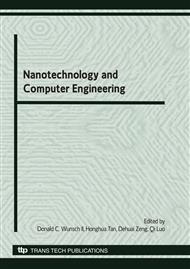p.64
p.69
p.74
p.80
p.87
p.93
p.97
p.103
p.107
Accurate SER Estimation by Transform Matrix Analysis for Fault Tolerant Circuits Design
Abstract:
As the transistor sizes continue to shrink, quantum effects will significantly affect the circuit behavior. The inherent unreliability of nano-electronics will have significantly impact on the way of circuits design, so defects and faults of nano-scale circuit technologies have to be taken into account early in the design of digital systems. Fault-tolerant architectures may become a necessity to ensure that the underlying circuit could function properly. In CAD software, a same logic can be made out with different circuits but different design methodology can reach different soft error tolerance ability, so we must find a way to estimate the error rate of the circuit efficiently to make the design more fault tolerant. In this paper, a new way to fault tolerance design in nano-scale circuit by accurate soft error rate (SER) estimation is proposed. Transform matrix is used for SER computation and a design criteria is then proposed. Simulation results show that the proposed transform matrix model is effective for nano-scale circuits and the criteria delivered is suitable CAD tools development in nano-system design.
Info:
Periodical:
Pages:
87-92
Citation:
Online since:
June 2010
Authors:
Price:
Сopyright:
© 2010 Trans Tech Publications Ltd. All Rights Reserved
Share:
Citation:


